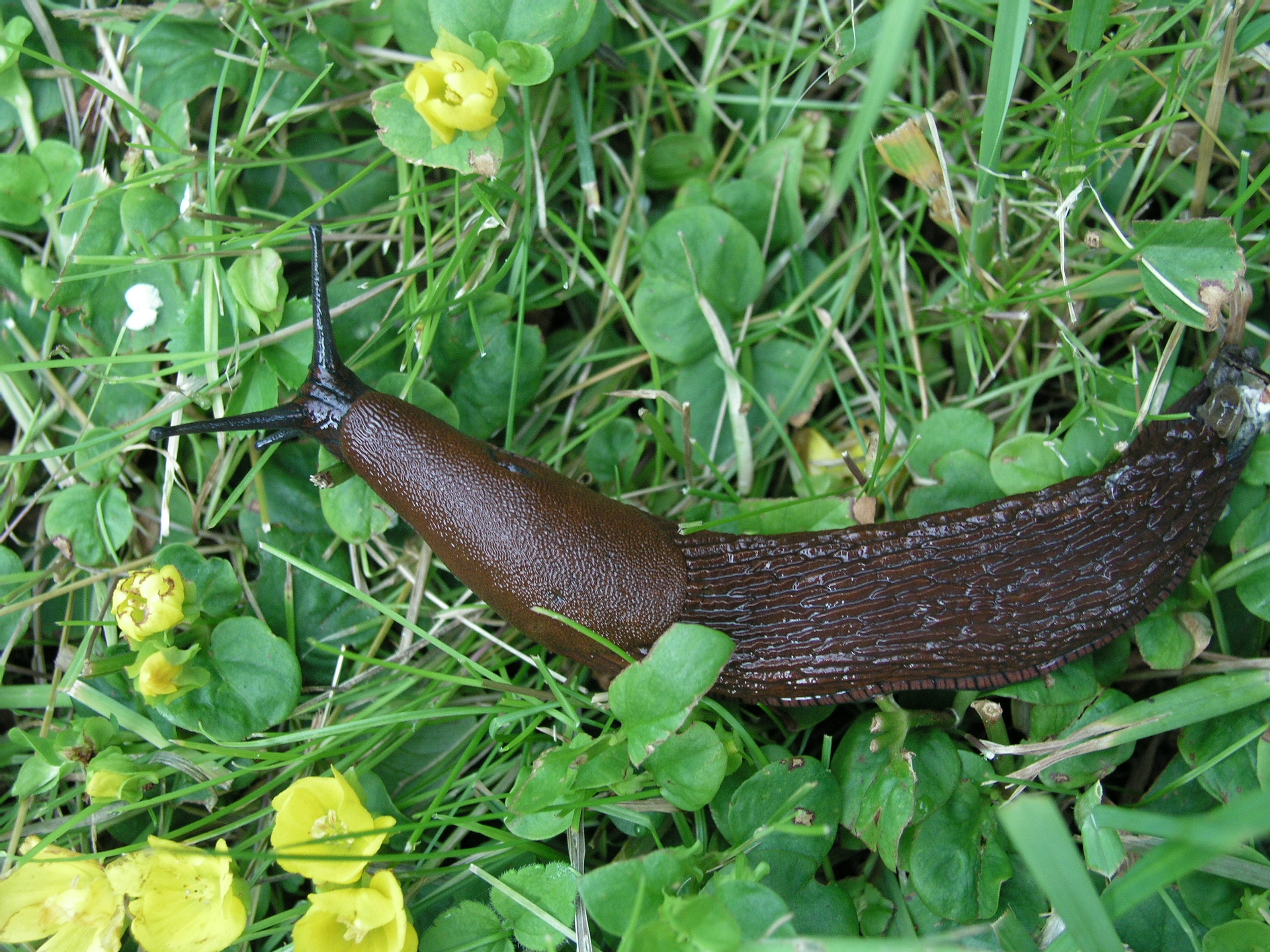- Spanish slug
Taxobox
name = Spanish slug

image_width = 250px
regnum =Animal ia
phylum =Mollusca
classis =Gastropoda
ordo =Pulmonata
familia =Arionidae
genus = "Arion"
species = "A. lusitanicus"
binomial = "Arion lusitanicus"
binomial_authority = (Mabille, 1868)The Spanish slug, more commonly known in English-speaking countries under its
Latin name, "Arion lusitanicus", is a highly invasive slug species that is often considered a pest in areas where it is not indigenous, and often in places where it is.The species originates from the
Iberian Peninsula , although it is noticed far more often in northern parts ofEurope , where it was first discovered in the mid-1900s. The animal is about the same size as its relative, theblack slug , growing to a maximum size of about 12 cm. Leopard dots are a characteristic feature, albeit not present among all individuals.The local name of the slug in the regions it has invaded is typically a translation of "Spanish slug." In recent years, as its dominance has increased, it has been nicknamed "killer slug", perhaps due to its tendency to eat dead or weaker individuals of the species, although its destructive impact on gardens may seem just as appropriate a reason for the name.The main reason behind problematic invasions of gardens by the Spanish slug is that it is a
hermaphrodite , meaning that one single slug can start an infestation. Offspring numbering up to 100 eggs may be produced. Bad export control may also be a cause, as the main route for the slugs to spread is through careless handling of imported produce fromSpain andPortugal .In recent years, it has been rumoured that the Spanish slug has bred with the indigenous black slug to produce a more frost-resistant variety in more northerly regions.
See also
*
Black slug
* (on Wikibooks)
*Slug External links
* [http://www.fmnh.helsinki.fi/elainmuseo/selkarangattomat/tietoa/espanjansiruetana/leviaminen.htm map of expansion]
Wikimedia Foundation. 2010.
